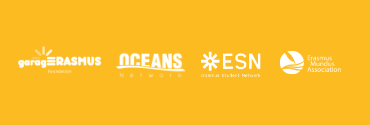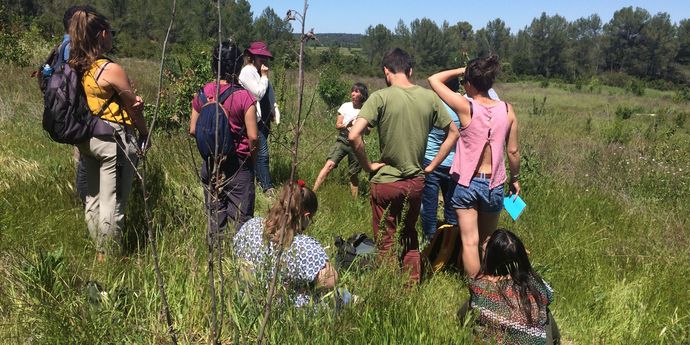News
ARTrees learning village: research and artistic residence on agroforestry for boosting employability
Last May, in Montpellier, back to back with the World Agroforestry congress, 20 young researchers took part to a collective research work on the field, seconded by a mentoring program. During a painting workshop, participants were inducted to create a piece that could reflect what agroforestry is for them. The approach taken to build up this residence: mixing art and science and building a community, resulted to be extremely efficient to reflect about career development.
Pushing boundaries beyond
Combining art and science makes it possible to go beyond the boundaries of everyone's knowledge. Art and science have in common to apprehend and to show a view of the world even if each of them does so in a very different way. It is this consideration that has led the ARTrees project team to propose to young researchers to get involved into an artistic process that would culminate in an open exhibition previous to the World Agroforestry congress.
Young researchers ensured during the exhibition a dialogue with visitors around their paintings leading to exchanges on their scientific work. Farmers who were interviewed as part of the Scientific Residence were invited to come and see the exhibition too. The paintings of the young researchers were a real tool for establishing a dialogue around the treated problem statement, from a different angle with the farmers interviewed.
Thus, the artistic process engages the researcher in a reflexivity and communication position, it also leads to produce artifacts that facilitate the dialogue and sharing of experiences among pairs and beyond, under a different perspective.
Care, share and win
During the whole week, very special and careful attention was given to the moments of life in common among participants. The leading team as part of the group too, guided participants to work together caring about the wellbeing of each other and of the group. Moments of "common life" were seen as an opportunity to get to know each other, to identify how one could be a leverage for the career progression of the others, and the other way around.
These "caring" approach enabled building up a strong community meaningful for each participant. This sense of belonging combined with the exercise of reflexivity that the painting workshop brought, made ARTrees become an integral part of the career progression of these young researchers. Participants were significantly empowered to take part to the World Agroforestry Congress, and also very well prepared to take the most from the mentoring experience that was proposed.
A tuneful melting pot
A key component to boost participants employability was the harmony and richness of the combination of the project's stakeholders. By deeply analysing Terracoopa ( https://www.terracoopa.net/ ) participants discovered a genuine structure from the socio-economic tissue that allies farm incubator, consultants, farmers, trainers. Inspiring different and original shapes of entrepreneurship to think about career progression.
CIRAD ( https://www.cirad.fr/en/who-are-we ) is a French research organisation working for the sustainable development of tropical and Mediterranean regions. Its research excellence is acknowledge at national and international level. Being able to count with its senior researchers for conducting the fieldwork and for the mentoring program was a key strength for the whole project. The management team was made up by members from ESN and EMA and counted with the special contribution from MCAA France members. The development of the project happened smoothly and was a fruitful experience for all. Members had different training backgrounds, different ages, different nationalities, but a common core: Erasmus Actions. Maybe, that common view, that willingness to achieve a given objective, that lack of borders... maybe that was the key for being able to play the good symphony.


